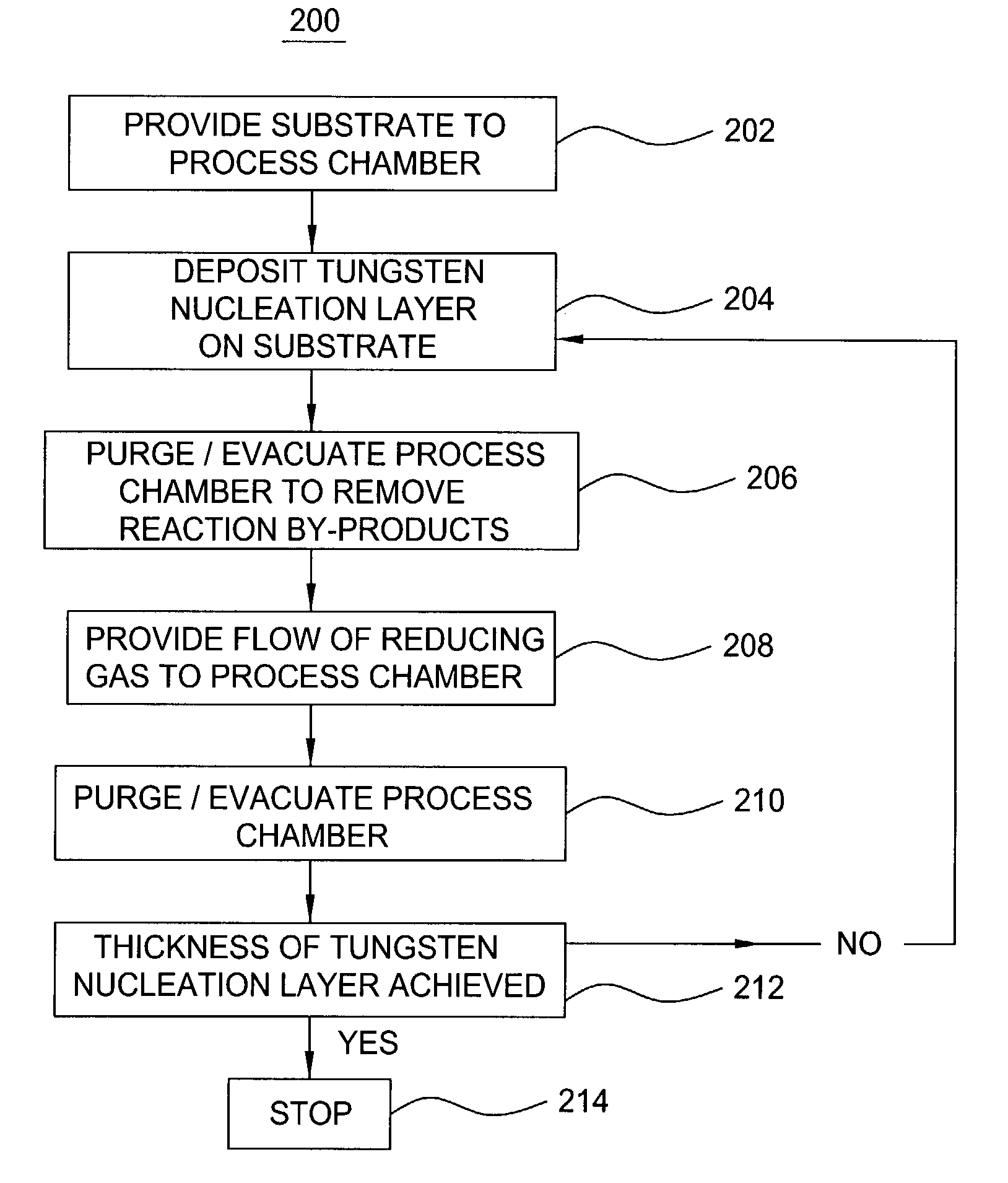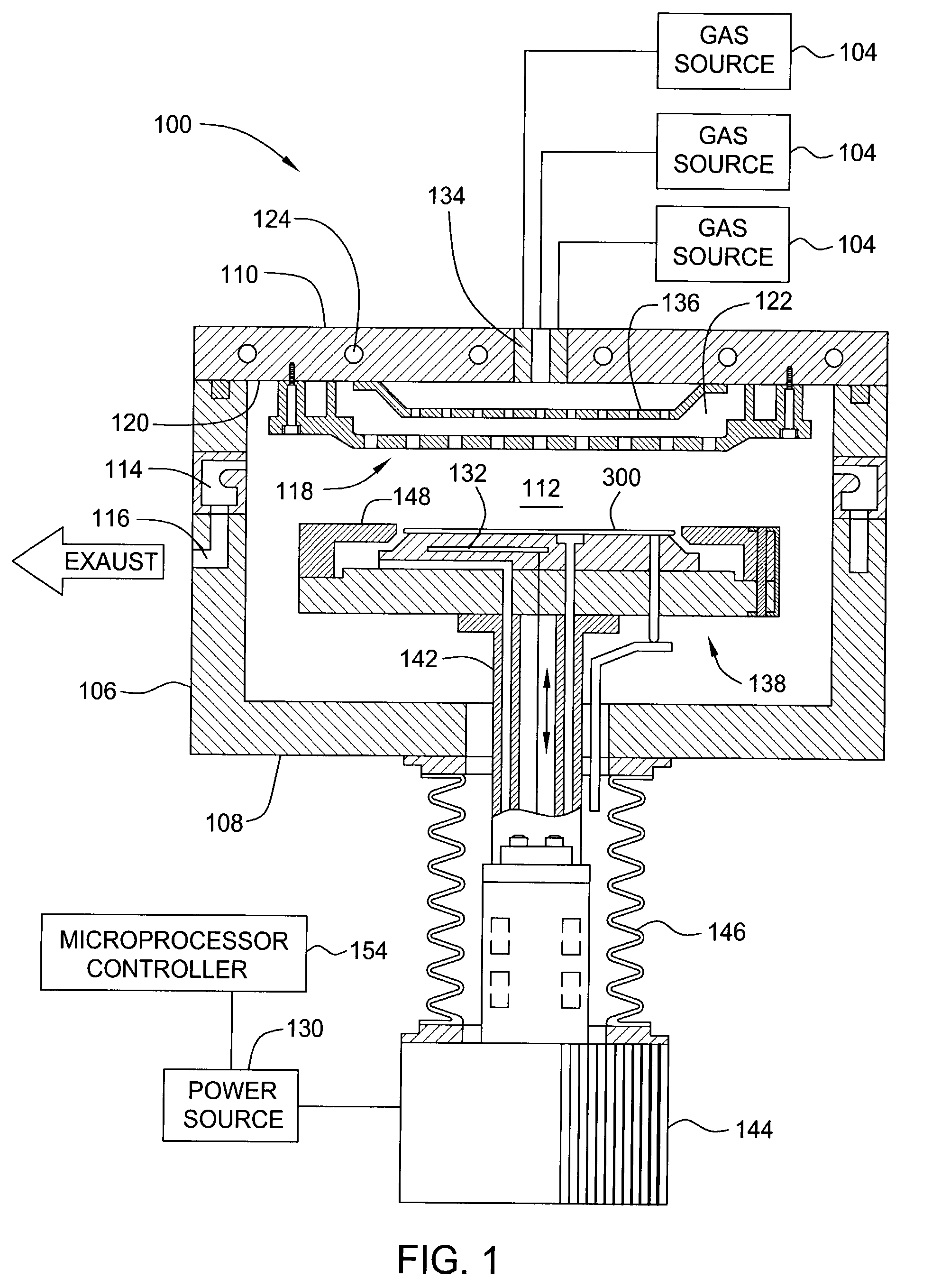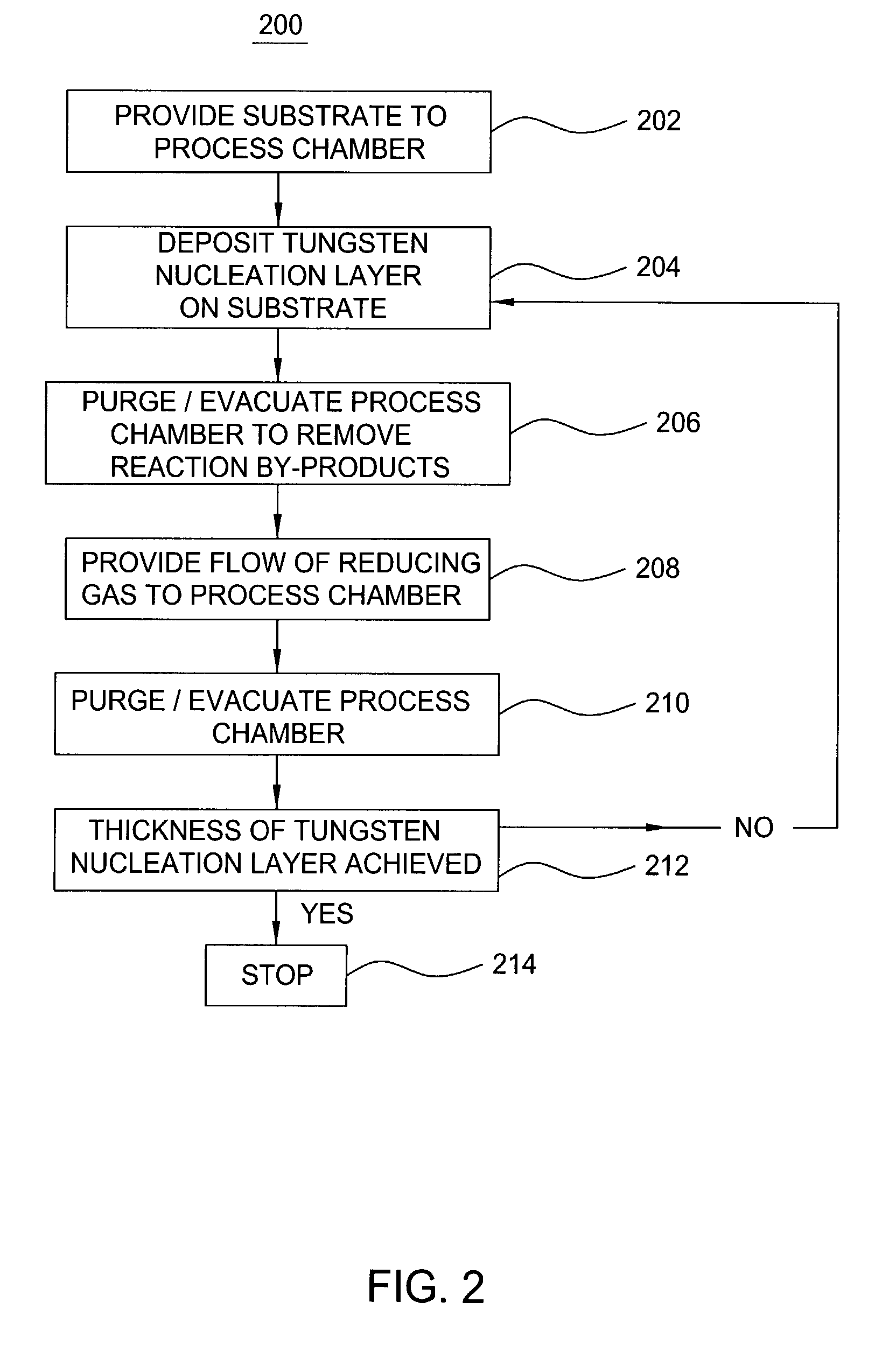Pulsed nucleation deposition of tungsten layers
a technology of tungsten and tungsten layers, applied in the direction of polycrystalline material growth, crystal growth process, chemically reactive gas, etc., can solve the problems of increasing stringent requirements for step coverage and layer uniformity, tungsten layers, for example, are particularly difficult to deposit, etc., and achieve good step coverage
- Summary
- Abstract
- Description
- Claims
- Application Information
AI Technical Summary
Benefits of technology
Problems solved by technology
Method used
Image
Examples
Embodiment Construction
[0015]Embodiments described herein relate to a method for depositing a tungsten nucleation layer on a substrate. FIG. 1 depicts a schematic cross-sectional view of a chemical vapor deposition (CVD) process chamber 100 that may be used to practice embodiments of the invention described herein. The process chamber 100 may be part of a processing system (not shown) that includes multiple processing chambers connected to a central transfer chamber (not shown) and serviced by a robot (not shown).
[0016]The process chamber 100 includes walls 106, a bottom 108, and a lid 110 that define a process volume 112. The walls 106 and bottom 108 are typically fabricated from a unitary block of aluminum. The walls 106 may have conduits (not shown) therein through which a fluid may be passed to control the temperature of the walls 106. The process chamber 100 may also include a pumping ring 114 that couples the process volume 112 to an exhaust port 116 as well as other pumping components (not shown).
[...
PUM
| Property | Measurement | Unit |
|---|---|---|
| time period | aaaaa | aaaaa |
| temperature | aaaaa | aaaaa |
| total pressure | aaaaa | aaaaa |
Abstract
Description
Claims
Application Information
 Login to View More
Login to View More - R&D
- Intellectual Property
- Life Sciences
- Materials
- Tech Scout
- Unparalleled Data Quality
- Higher Quality Content
- 60% Fewer Hallucinations
Browse by: Latest US Patents, China's latest patents, Technical Efficacy Thesaurus, Application Domain, Technology Topic, Popular Technical Reports.
© 2025 PatSnap. All rights reserved.Legal|Privacy policy|Modern Slavery Act Transparency Statement|Sitemap|About US| Contact US: help@patsnap.com



